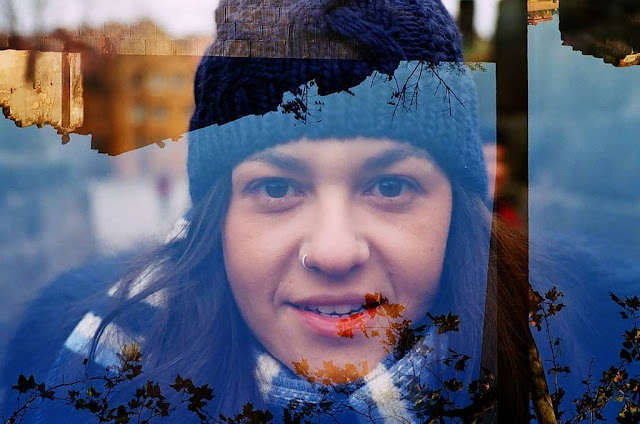How to do a Film Swap with a 35mm roll? (Youtube video included.)
Hi Analog lovers! How are you?
Interested in film swaps? Skeptical about results? Looking for guidance? No problems, we are here to help you! We decided to create an online guide which can come in handy to the first timers.
Shall we start?
What you need for a film swap?
Step 2:
How will the other swapper know where to shoot from? If you ever felt awkward that double exposures between two swappers are not aligned, then this step is for you. But you should do this before closing the back of the camera and after loading the film.
Step 6:
Interested in film swaps? Skeptical about results? Looking for guidance? No problems, we are here to help you! We decided to create an online guide which can come in handy to the first timers.
Shall we start?
What you need for a film swap?
- An analog camera (the more manual it is, the better)
- A 35mm roll
- A marker (not children's sketches, they get erased very easily on film)
- A pen and a paper (optional)
- A little bit of creativity in you!
Step 1:
The first step of swapping a film is to understand its speed. Film Speed is normally measured in ISO or ASA, which is printed on film cartridge.
 |
| In this example, a roll of film speed 50 is shown |
Step 2:
Before loading film, and closing the back, there is a small setting which needs to be done.
 |
| Mark the edges of the camera where the frame starts and ends. You may mark either of the top/bottom of the frame. For convenience, you may mark both top and bottom. |
Step 3:
 |
| Connect the dots. Draw vertical lines to mark the frame. |
Step 4:
Since we are exposing the same roll twice, there is every chance that it gets overexposed. To counter this, we have to underexpose the roll. The speed of the film here is 50, so we have to set the speed dial on camera to 100. (We are pretending that the film roll is of a higher speed and letting lesser light on to it.)
 |
| The speed on the camera should be double the speed of the film. It is always better to check the maximum speed on the camera of your swapper, so that you can choose a film of the right speed. |
Step 5:
This step is optional. But this would make your double exposures look better. To make your swapper aware what you have shot and whether you shot a frame in a landscape or portrait orientation, you may log the shots. Some swappers prefer not to know what has been shot at all. They want to be surprised. Some agree to shoot the entire roll only in landscape orientation. We leave all these preferences to your discretion. (This is where your creativity comes into picture.)
 |
| This process of logging the shots, was invented in the freewheeling sessions of our WhatsApp group |
Our friend from Russia, Alexander Loginov (instagram.com/barabeq), not only appreciated it, but he actually implemented it. He logged the shots and sent the roll to https://plus.google.com/+JangamVeeraSasidhar in India.
 |
| Striving for perfection in the imperfections! |
Step 6:
While rewinding the film, do not rewind it completely. Leave the leader out so that the otherswapper finds it easy to reload it on to his/her camera. If they have the equipment to pull the leader out, you may rewind it completely.
You are all set now. Go shoot the roll and send it out. Wish you all the very best!!
Further references:
There are many videos on youtube on how to do a film swap. You can go through them for more inputs. Our big-hearted friend, Chris has allowed us to include his video titled "Film Swapping for AWESOME multiple exposures" here. Thanks a lot Chris!
You are all set now. Go shoot the roll and send it out. Wish you all the very best!!
Further references:
There are many videos on youtube on how to do a film swap. You can go through them for more inputs. Our big-hearted friend, Chris has allowed us to include his video titled "Film Swapping for AWESOME multiple exposures" here. Thanks a lot Chris!


Comments
Post a Comment